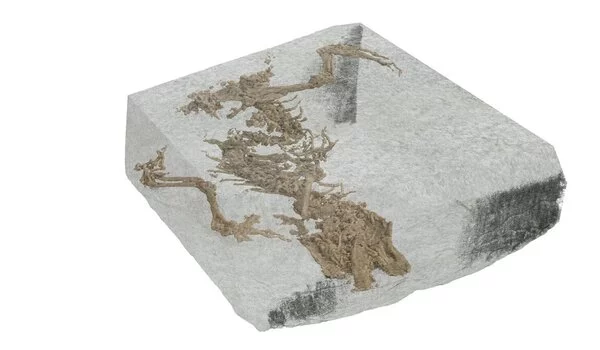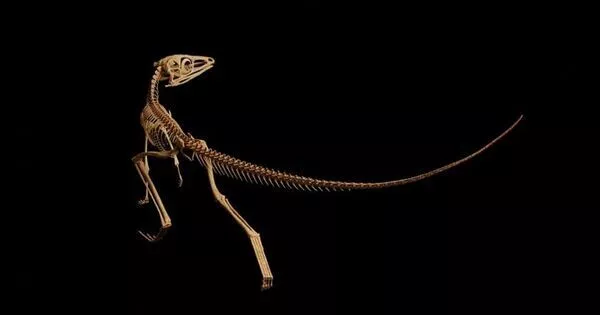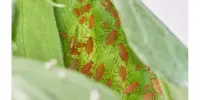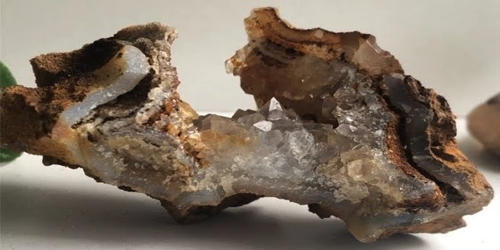The most complete Jurassic fossil lizard ever discovered was discovered in Scotland. The new Bellairsia gracilis specimen is helping to reveal what lizard and snake ancestors might have looked like. A small Scottish fossil is changing our understanding of lizards.
A new fossil discovery from Scotland has shed light on the early evolution of lizards during the time of the dinosaurs. Bellairsia gracilis, a tiny skeleton discovered on the Isle of Skye, is only 6 cm long and dates back to the Middle Jurassic period, 166 million years ago. The remarkable new fossil consists of a nearly complete skeleton with life-like articulation, with only the snout and tail missing. This makes it the most complete fossil lizard of this age anywhere in the world.
Bellairsia’s skeleton contains a mix of ancestral and modern features, indicating what the ancestor of today’s lizards (which are classified as ‘squamates’) might have looked like.
The findings were published in the journal Nature by researchers from the universities of Warsaw, Oxford, and UCL. ‘This little fossil lets us see evolution in action,’ said first author Dr. Mateusz Talanda (University of Warsaw and UCL). In palaeontology, you rarely get the chance to work with such complete, well-preserved fossils from a time when we know so little.’
It was one of the first fossils I found when I began working on Skye. The little black skull was poking out from the pale limestone, but it was so small I was lucky to spot it. Looking closer I saw the tiny teeth, and realised I’d found something important, but we had no idea until later that almost the whole skeleton was in there.
Dr. Elsa Panciroli
The fossil was found in 2016 by a team led by Oxford University and National Museums Scotland. It is one of several new fossil discoveries from the island, including early amphibians and mammals, which are revealing evolution of important animal groups that persist to the present day.
Dr. Talanda commented: ‘Bellairsia has some modern lizard features, like traits related to cranial kinesis — that’s the movement of the skull bones in relation to one another. This is an important functional feature of many living squamates.’
Co-author Dr. Elsa Panciroli (Oxford University Museum of Natural History and National Museums Scotland) who discovered the fossil, said: ‘It was one of the first fossils I found when I began working on Skye. The little black skull was poking out from the pale limestone, but it was so small I was lucky to spot it. Looking closer I saw the tiny teeth, and realised I’d found something important, but we had no idea until later that almost the whole skeleton was in there.’

Squamates are the living group that includes lizards and snakes, and they have over 10,000 species, making them one of the most species-rich living vertebrate animal groups. They include animals found all over the world, such as snakes, chameleons, and geckos. The group is distinguished by numerous specialized features of the skull and rest of the skeleton.
Although we know that squamates first appeared 240 million years ago in the Triassic, a lack of Triassic and Jurassic fossils has made tracing their early evolution and anatomy difficult.
Analysing the new fossil alongside living and extinct fossil squamates confirms Bellairsia belongs to the ‘stem’ of the squamate family tree. This means that it split from other lizards just before the origin of modern groups. The research also supports the finding that geckos are a very early branching lineage, and that the enigmatic fossil Oculudentavis, previously suggested to be a dinosaur, is also a stem squamate.
To study the specimen, the team used X-ray computed tomography (CT) which, like medical CT, allows for non-invasive 3D imaging. This allowed the researchers to image the entire fossil, even though most of the specimen is still hidden by surrounding rock. Whereas medical scanners work at the millimetre scale, the Oxford University CT scanner revealed details down to a few tens of micrometres.
Parts of the skeleton were then imaged in even greater detail, including the skull, hindlimbs and pelvis, at the European Synchrotron (ESRF, Grenoble, France). The intensity of the synchrotron beam permits a resolution of 4 micrometres, revealing details of the smallest bones in the skeleton.
‘Fossils like this Bellairsia specimen have huge value in filling gaps in our understanding of evolution and the history of life on Earth,’ said co-author Professor Roger Benson (Department of Earth Sciences, University of Oxford). It was once nearly impossible to study such tiny fossils, but this study demonstrates the power of new techniques, such as CT scanning, to image these non-destructively and in great detail.’
‘It is wonderful to have a complete specimen of this tantalising little lizard, and to see where it fits in the evolutionary tree,’ said co-author Professor Susan Evans (UCL), who first described and named Bellairsia from a few jaw and skull bones found in Oxfordshire 25 years ago. Through fossils like Bellairsia we are gaining a better understanding of early lizard anatomy. Angus Bellairs, the lizard embryologist after which Bellairsia was originally named, would have been delighted.’
















